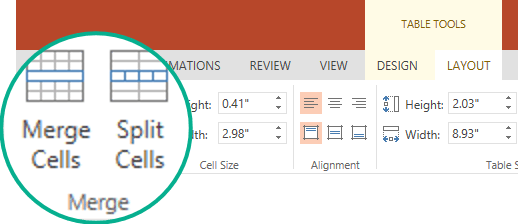
the range containing the rows of data (excluding the header).To use the above function, you would specify

If Application.Calculation oldCal Then Application.Calculation = oldCal

If Application.ScreenUpdating oldUpd Then Application.ScreenUpdating = oldUpd 'Loop through the data rows to split them as neededĭo While r Then Set dataRng = dataRng.Resize(rowCount) Row + 1ĭim splitLb As Long, splitUb As Long, splitI As Long Offset(, idCol - 1).Resize(, 1).End(xlDown).Row. 'If an ID column is specified, use it to determine where the table ends by finding the first row 'Modify application settings for the sake of speedĭim rowCount As Long: rowCount =

Optional ByVal idCol As Long = 0) As Booleanĭim oldUpd As Variant: oldUpd = Application.ScreenUpdatingĭim oldCal As Variant: oldCal = Application.Calculation Function SplitRows(ByRef dataRng As Range, ByVal splitCol As Long, ByVal splitSep As String, _ This function happens to have similarities to procedure, but it does not rely on the clipboard. It also avoids copying and inserting entire rows, and it allows you to specify a separator other than a comma. This method makes sure not to modify the cells to the left, to the right, or above the table of data, in case the table does not start in A1 or in case there is other data on the sheet besides the table. Given excellent and brief answer, the VBA function below might be a bit of an overkill, but it will hopefully be of some help to someone looking for a more "generic" solution. Ws.Cells(iRow, ANALYSIS_ROW).Offset(iIndex).Value2 = iSplit(iIndex)Īpplication.Calculation = xlCalculationAutomatic ISize = UBound(iSplit) - LBound(iSplit) + 1įor iIndex = LBound(iSplit) To UBound(iSplit) ISplit = Split(ws.Cells(iRow, ANALYSIS_ROW).Value2, ",") Cells(.Rows.Count, ANALYSIS_ROW).End(xlUp).Rowįor iRow = lastrow To DATA_START_ROW Step -1 Worksheets("Sheet4").Copy After:=.Worksheets("Sheet4") Option ExplicitĪpplication.Calculation = xlCalculationManual To create a carriage return (new line) within a cell, hit Alt + Enter while editing a cell.ĭownload the sample file to see the above example in Excel.This will do what you want. This is annoyingly simple and annoyingly easy to forget almost never in Excel will you use the shortcut Ctrl + J, but that's all it takes to separate data by carriage return (new line). Make sure to select a cell to the right of the current cell/column for the Destination option if you do not want to overwrite the original cell that contains all of the data in one cell.

(Carriage return is the term for the element that puts text onto a separate line within a cell in Excel.) Technically, this method is Text-to-Columns using a carriage return as the delimiter.
#Excel split cells into rows how to
How to split a cell by each line of data within it this will put each line into its own separate cell.


 0 kommentar(er)
0 kommentar(er)
